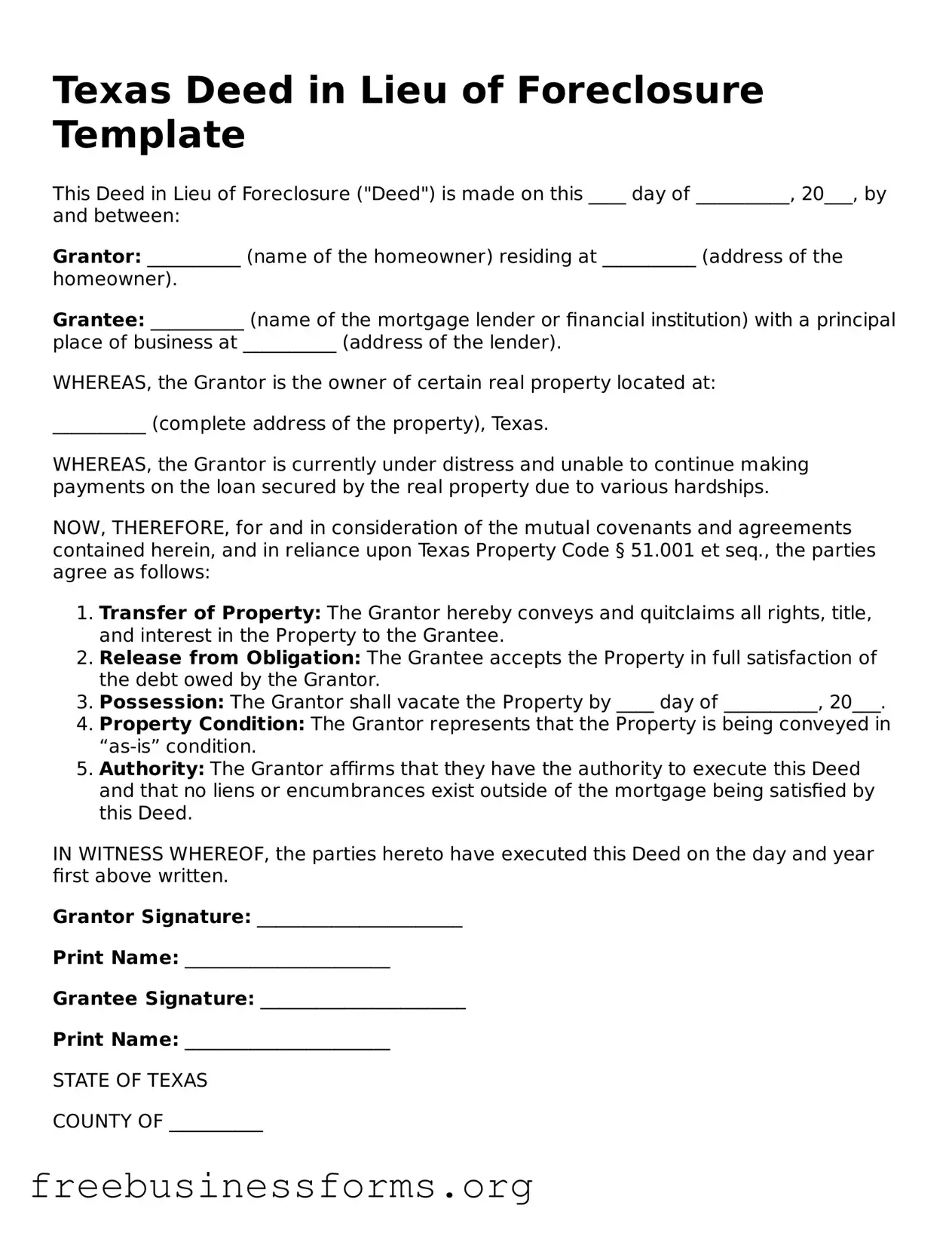Texas Deed in Lieu of Foreclosure Template
This Deed in Lieu of Foreclosure ("Deed") is made on this ____ day of __________, 20___, by and between:
Grantor: __________ (name of the homeowner) residing at __________ (address of the homeowner).
Grantee: __________ (name of the mortgage lender or financial institution) with a principal place of business at __________ (address of the lender).
WHEREAS, the Grantor is the owner of certain real property located at:
__________ (complete address of the property), Texas.
WHEREAS, the Grantor is currently under distress and unable to continue making payments on the loan secured by the real property due to various hardships.
NOW, THEREFORE, for and in consideration of the mutual covenants and agreements contained herein, and in reliance upon Texas Property Code § 51.001 et seq., the parties agree as follows:
- Transfer of Property: The Grantor hereby conveys and quitclaims all rights, title, and interest in the Property to the Grantee.
- Release from Obligation: The Grantee accepts the Property in full satisfaction of the debt owed by the Grantor.
- Possession: The Grantor shall vacate the Property by ____ day of __________, 20___.
- Property Condition: The Grantor represents that the Property is being conveyed in “as-is” condition.
- Authority: The Grantor affirms that they have the authority to execute this Deed and that no liens or encumbrances exist outside of the mortgage being satisfied by this Deed.
IN WITNESS WHEREOF, the parties hereto have executed this Deed on the day and year first above written.
Grantor Signature: ______________________
Print Name: ______________________
Grantee Signature: ______________________
Print Name: ______________________
STATE OF TEXAS
COUNTY OF __________
Before me, the undersigned authority, on this ____ day of __________, 20___, personally appeared __________ (Grantor’s name) and __________ (Grantee’s name), known to me to be the person(s) whose name(s) are subscribed to the foregoing instrument, and acknowledged to me that they executed the same for the purposes and consideration therein expressed.
Given under my hand and seal of office.
Notary Public: ______________________
Commission Expires: ______________________
